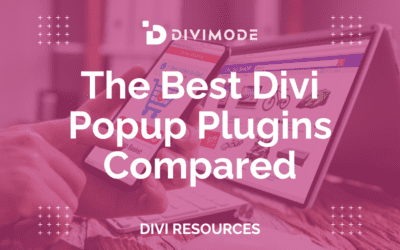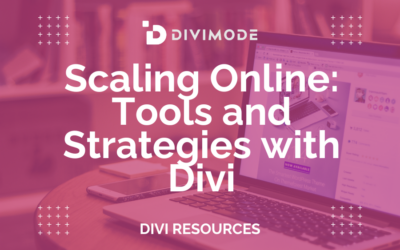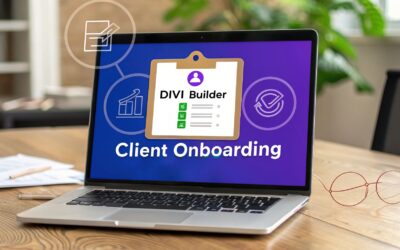In the competitive world of online retail, a stunning website is just the beginning. The real differentiator between a store that thrives and one that struggles is the customer journey. A seamless, intuitive, and enjoyable user experience (UX) doesn't just reduce friction; it builds trust, encourages repeat business, and transforms casual browsers into loyal customers. It’s the invisible architecture that guides a visitor from interest to purchase, making every step feel effortless and satisfying.
This guide moves beyond theory to provide concrete, actionable ecommerce user experience best practices tailored specifically for Divi and WooCommerce users. We will unpack 10 crucial strategies that address every critical touchpoint, from simplified checkouts and mobile-first design to transparent pricing and building trust with social proof. Each practice is designed to directly enhance customer satisfaction and, in turn, positively impact your bottom line. To truly unlock your e-commerce superpower, it's essential to continually explore how to improve website conversion rates by understanding user behavior.
By implementing these proven methods, you can optimize your online store, reduce cart abandonment, and foster a loyal customer base. Forget generic advice; you'll learn how to leverage the powerful combination of Divi and WooCommerce to create a shopping experience that not only looks great but functions flawlessly, proving that superior UX is one of the most effective sales tools at your disposal. Let's dive into the practices that will set your e-commerce store apart.
1. Simplified Checkout Process
A convoluted checkout process is the primary cause of cart abandonment. Simplifying this final step is one of the most impactful ecommerce user experience best practices you can implement. The goal is to remove every unnecessary field, click, and moment of hesitation between the customer adding an item to their cart and completing the purchase. A streamlined checkout respects the customer's time and builds confidence, directly translating to higher conversion rates.

Pioneered by giants like Amazon with its one-click purchase, the simplified checkout is now a standard expectation. Research from the Baymard Institute consistently shows that a complex process is a top reason for abandonment. By minimizing the steps required, you reduce the chances of a user getting distracted or frustrated.
How to Implement a Simplified Checkout
To effectively streamline your checkout, focus on eliminating friction. Each element should serve a clear purpose in facilitating the transaction.
- Enable Guest Checkout: Forcing users to create an account is a major barrier. Offer a guest checkout option and provide an opportunity to create an account after the purchase is complete.
- Reduce Form Fields: Only ask for essential information. Use tools like address auto-fill (Google Places API) to speed up data entry. Does your business truly need their phone number or a second address line? If not, remove the field.
- Show a Progress Indicator: A visual indicator showing steps like "Shipping," "Payment," and "Review" manages expectations and makes the process feel faster and more organized.
- Display Trust Signals: Prominently feature security badges (SSL certificates, Norton, McAfee), accepted payment logos (Visa, PayPal), and clear return policies to alleviate security concerns.
For Divi and WooCommerce users, achieving this level of optimization is highly accessible. You can leverage various plugins and custom code to modify your checkout flow. For a deeper dive, learn how you can customize the checkout page in WooCommerce to match these best practices perfectly.
2. High-Quality Product Images and Videos
In ecommerce, your product visuals do the selling. Since customers cannot physically touch or inspect items, high-quality images and videos are essential for bridging the gap between the digital and physical worlds. This is a fundamental ecommerce user experience best practice because it builds trust, provides clarity, and gives customers the confidence needed to make a purchase, ultimately reducing returns and increasing satisfaction.

This visual-first approach was popularized by companies like Zappos, which set the standard with multiple, high-resolution shoe photos from every conceivable angle. Similarly, brands like ASOS show clothing on models of various sizes, giving context to fit and style. By providing a comprehensive visual understanding of your products, you answer customer questions before they are even asked, significantly improving the user journey and boosting conversions.
How to Implement High-Quality Visuals
To effectively use visuals, your goal is to replicate the in-store experience as closely as possible. This means showing every detail, feature, and potential use case.
- Provide Multiple High-Resolution Images: Offer at least 3-5 images per product. Include studio shots on a clean background, lifestyle photos showing the product in use, and close-ups of important details or textures.
- Incorporate Product Videos: A short 15-30 second video can demonstrate features, functionality, and scale far better than static images. GoPro’s action-packed product demos are a perfect example of video’s power.
- Enable Zoom and 360-Degree Views: Allow users to zoom in on high-resolution images to inspect materials and craftsmanship. For complex or high-value products, a 360-degree view offers a complete interactive perspective.
- Optimize for Performance: High-quality doesn't have to mean slow-loading. Ensure all images and videos are compressed and optimized for the web to prevent slow page speeds from hurting your user experience.
For Divi users, managing and displaying a rich media gallery is straightforward. You can effectively showcase your products by optimizing your media library and using Divi’s built-in modules. To master this, review The Ultimate Guide to Using Images with Divi for advanced techniques on optimization and display.
3. Mobile-First Design Approach
A mobile-first design approach is no longer optional; it's an essential ecommerce user experience best practice. With over half of all ecommerce traffic originating from mobile devices, this strategy involves designing your store for the smallest screen first and then scaling up to desktop. This ensures the core functionality and user journey are optimized for the majority of your visitors, preventing a clunky, scaled-down desktop experience that alienates mobile shoppers. A seamless mobile experience directly impacts engagement, satisfaction, and ultimately, sales.

Pioneered by thought leaders like Luke Wroblewski and enforced by Google’s mobile-first indexing, this approach prioritizes what matters most. By focusing on mobile constraints, you are forced to be disciplined about content and features, resulting in a cleaner, faster, and more focused experience for all users. Retailers like Amazon and Etsy have mastered this, offering intuitive mobile apps and responsive sites that make shopping on a small screen effortless.
How to Implement a Mobile-First Design
Adopting a mobile-first mindset requires shifting your design process from desktop-down to mobile-up. This means focusing on touch-friendly elements and performance from the very beginning.
- Design for Thumbs: Structure your layout to accommodate one-handed navigation. Place key calls-to-action like "Add to Cart" and navigation menus within easy reach of a user's thumb.
- Optimize for Speed: Mobile users expect speed. Compress images, leverage browser caching, and minimize code to ensure your pages load in under 3 seconds on a mobile connection.
- Simplify Forms: Minimize text input wherever possible. Use large, touch-friendly form fields, enable predictive search, and integrate mobile-native payment options like Apple Pay or Google Pay.
- Ensure Readability: Use a minimum font size of 16px for body text to ensure it's easily readable on small screens without requiring users to pinch and zoom. Provide high contrast between text and background colors.
For Divi users, the built-in responsive editing tools are invaluable. You can easily adjust module settings for tablet and mobile views, ensuring your design is perfectly optimized for every device. Leveraging Divi's controls for font sizes, spacing, and element visibility on different breakpoints is key to a successful mobile-first implementation.
4. Personalization and Recommendation Engines
A generic, one-size-fits-all shopping experience no longer meets modern customer expectations. Implementing personalization and recommendation engines is a powerful ecommerce user experience best practice that transforms your store into a dynamic, responsive environment tailored to each individual visitor. By using customer data, you can present relevant products and content, making shoppers feel understood and valued, which significantly boosts engagement and sales.
This strategy moves beyond simple greetings to deliver a truly customized journey. It leverages user behavior, purchase history, and stated preferences to forecast what a customer will want next. When a visitor sees products that align with their interests, the path to purchase becomes shorter and more enjoyable, fostering loyalty and increasing the average order value.
How to Implement Personalization and Recommendations
Effective personalization requires a thoughtful approach to data collection and application. The goal is to be helpful and relevant without being intrusive, building trust with every interaction.
- Segment Your Audience: Group customers based on shared characteristics like purchase history, browsing behavior, or location. This allows you to create targeted campaigns and display relevant product carousels, such as "Best Sellers in Your Area."
- Leverage Recommendation Types: Display a variety of recommendations. Use "Customers who bought this also bought" on product pages, "Recently viewed" on the homepage, and "You might also like" in the shopping cart to create multiple opportunities for upsells and cross-sells.
- Use Behavioral Triggers: Send personalized emails based on user actions. Triggered messages for abandoned carts, follow-ups on recently viewed items, or "we miss you" campaigns with tailored product suggestions can effectively re-engage customers.
- Be Transparent and Respect Privacy: Clearly explain why you are recommending a product ("Because you viewed…") to build trust. Always comply with data privacy regulations like GDPR and CCPA, providing users with clear opt-out options.
For WooCommerce stores, tools like Product Recommendations by WooCommerce or third-party services like Dynamic Yield can integrate sophisticated algorithms directly into your site. These platforms allow you to start with simple rules and evolve to more complex, AI-driven models as your business grows.
5. Clear Navigation and Search Functionality
If customers can't find what they're looking for, they can't buy it. Implementing intuitive site navigation and a powerful search function is a cornerstone of ecommerce user experience best practices. This dual approach caters to two types of shoppers: those who prefer to browse categories and those who know exactly what they want and prefer to search directly. A well-structured system reduces friction in the product discovery phase, leading to higher satisfaction and conversions.
Industry leaders like Amazon and Best Buy have set the standard for effortless product discovery. Their logical category hierarchies, combined with robust search and advanced filtering, allow users to pinpoint items with precision. Research from the Baymard Institute confirms that poor navigation and search are significant sources of user frustration, often leading them to abandon a site entirely.
How to Implement Clear Navigation and Search
The goal is to make finding products feel effortless and intuitive. Your navigation should be a logical map of your store, while your search bar acts as a helpful and intelligent assistant.
- Make the Search Bar Prominent: Your search bar should be highly visible, ideally in the header, on every single page of your website. Don't make users hunt for it.
- Implement Autocomplete and Suggestions: As users type, provide intelligent suggestions and product previews. This speeds up the process and helps prevent misspellings.
- Use Faceted Navigation: Allow users to refine search results and category pages using multiple filters (e.g., size, color, brand, price). This is crucial for stores with large inventories.
- Optimize Your "No Results" Page: Instead of a dead end, use the "no results" page to offer alternative search queries, showcase popular products, or provide links to top-level categories.
- Keep Main Navigation Concise: Stick to a maximum of 5-7 top-level categories in your main menu to avoid overwhelming users. Use clear, simple language that your customers would use.
For Divi users, enhancing search functionality often involves a dedicated plugin. Tools like SearchWP integrate seamlessly with WooCommerce, allowing you to index everything from product SKUs to custom fields, providing a far more powerful search experience than the default.
6. Trust Signals and Social Proof
In ecommerce, trust is the currency that converts visitors into customers. Trust signals and social proof are credibility indicators that build customer confidence and reduce the inherent anxiety of purchasing online. By displaying elements like reviews, security badges, and testimonials, you provide psychological reinforcement that assures shoppers they are making a safe and wise decision. This is a cornerstone of creating a positive ecommerce user experience.

The concept was famously popularized by Amazon, which transformed customer reviews from a niche feature into a core part of the shopping journey. Research by Nielsen and findings from platforms like BrightLocal consistently confirm that consumers trust peer recommendations far more than brand advertising. Integrating these elements signals that your store is legitimate, your products are high-quality, and other people have had positive experiences.
How to Implement Trust Signals and Social Proof
To effectively build confidence, strategically place various forms of proof throughout your customer's journey, especially on product pages and during checkout.
- Leverage Customer Reviews: Actively encourage customers to leave reviews through post-purchase email follow-ups. Display the average star rating prominently on product pages and show the distribution of ratings to increase transparency. Highlighting "verified purchase" reviews adds another layer of authenticity.
- Showcase Security Badges: Display logos of accepted payments (Visa, PayPal, Stripe) and security certificates (SSL, Norton, McAfee) near the "Add to Cart" button and throughout the checkout process. This directly addresses security concerns at critical moments.
- Feature User-Generated Content: Whenever possible, include customer photos or videos with their reviews. Seeing a product in a real-world context is incredibly powerful social proof and helps manage expectations.
- Display Guarantees and Awards: Prominently feature your money-back guarantee, return policy, or any press mentions and industry awards. These act as third-party endorsements that validate your brand's credibility.
For Divi and WooCommerce sites, integrating these signals is straightforward. Numerous plugins allow for advanced review systems, testimonial sliders, and easy placement of trust badges. Many themes and modules also have built-in features to help you display this vital information without needing custom code.
7. Fast Page Loading and Performance Optimization
In ecommerce, speed is not a feature; it's a fundamental requirement. Slow-loading pages are a direct cause of high bounce rates and lost sales, as modern shoppers expect instant access to products. Optimizing your site's performance ensures a smooth, frustration-free journey, which is a critical ecommerce user experience best practice. A fast website feels more professional, reliable, and respectful of the customer's time, directly impacting conversions and SEO rankings.
The push for a faster web was heavily popularized by Google, which uses page speed as a ranking factor, and performance pioneers like Steve Souders. E-commerce platforms like Shopify have built their reputation on providing a highly optimized infrastructure, while giants like Amazon have demonstrated that even a millisecond improvement in load time can result in millions in revenue. This focus on performance is now a non-negotiable standard for any serious online retailer.
How to Implement Performance Optimization
Achieving top-tier speed involves a multi-faceted approach, focusing on both the front-end and back-end of your Divi and WooCommerce site.
- Target a Load Time Under 3 Seconds: For mobile users, this is the benchmark. Use tools like Google PageSpeed Insights to measure and identify bottlenecks in your loading sequence.
- Compress and Optimize Images: Images are often the heaviest assets on a page. Use tools to compress them without a noticeable loss in quality and implement lazy loading so below-the-fold images don't slow down the initial view.
- Leverage Caching and a CDN: Implement browser caching to store static assets locally for repeat visitors. Use a Content Delivery Network (CDN) like Cloudflare to serve files from servers geographically closer to your users, drastically reducing latency.
- Minimize and Defer Code: Minify your CSS and JavaScript files to reduce their size. Defer the loading of non-critical JavaScript to ensure the essential, above-the-fold content renders as quickly as possible.
Optimizing a Divi-built store involves specific techniques that can yield significant performance gains. To get a detailed, step-by-step guide, you can learn how to speed up your Divi website and boost performance for an enhanced user experience.
8. Transparent Pricing and Shipping Information
Unexpected costs at checkout are a notorious conversion killer. One of the most critical ecommerce user experience best practices is to be completely transparent about all costs from the very beginning. This means clearly displaying the product price, shipping fees, taxes, and any other potential charges long before the customer reaches the final payment step. This honesty builds trust and significantly reduces cart abandonment.
This practice was popularized by customer-centric brands like Zappos, which built its reputation on free shipping and returns, and Amazon Prime, which made clear shipping benefits a core part of its value proposition. When customers see all costs upfront, they feel respected and in control, making them more confident in their decision to purchase from you. Surprise fees create a negative emotional response and a sense of being misled.
How to Implement Pricing and Shipping Transparency
Your goal is to eliminate any "sticker shock" at the end of the customer journey. Integrate cost information early and often, making it a natural part of the browsing experience.
- Display Shipping Costs Early: Don't wait for the checkout page. Use a shipping calculator on product pages or in the shopping cart. Providing customers with clear and understandable shipping costs is fundamental for a positive user experience. This begins with an e-commerce business's ability to ensure accurately calculating shipping charges behind the scenes.
- Highlight Free Shipping Thresholds: If you offer free shipping after a certain order value, display this prominently throughout the site. Use a dynamic banner like, "You're only $15 away from free shipping!" to encourage larger orders.
- Show Estimated Delivery Dates: Alongside shipping costs, provide an estimated delivery window. This helps manage customer expectations and adds another layer of valuable information.
- Provide a Clear Cost Summary: Before the final "Pay Now" button, present a detailed breakdown of all costs: subtotal, shipping, taxes, and the final total. This reinforces transparency and gives the customer one last chance to review everything.
For Divi and WooCommerce sites, you can use plugins that offer advanced shipping rate calculations and display options. Many themes also allow for custom promotional banners to advertise shipping policies, ensuring this information is always visible to your users.
9. Seamless Payment Options and Security
The payment stage is the moment of truth in any ecommerce transaction. A lack of preferred payment options or visible security measures can instantly erode trust and cause a customer to abandon their purchase, even after they’ve navigated the entire site. Providing a variety of secure and convenient payment methods is one of the most critical ecommerce user experience best practices for maximizing conversions. It shows respect for customer preference and reassures them that their sensitive information is safe.
This practice was popularized by digital payment pioneers like PayPal and further advanced by innovators like Stripe and Square, who made accepting diverse payments simple for businesses of all sizes. Today, customers expect to see options beyond traditional credit cards, including digital wallets and Buy Now, Pay Later (BNPL) services like Klarna. Meeting this expectation removes friction and caters to a wider audience with varying financial habits.
How to Implement Seamless Payments and Security
To build a trustworthy and flexible payment environment, focus on offering choice and clearly communicating your security protocols. Every element should reinforce that the transaction is both easy and safe.
- Offer Diverse Payment Gateways: Don't limit your customers. At a minimum, integrate support for major credit cards, PayPal, and digital wallets like Apple Pay and Google Pay, which offer a faster, more secure checkout on mobile devices.
- Prominently Display Trust Badges: Place security seals (SSL certificates, PCI DSS compliance) and accepted payment logos (Visa, Mastercard, PayPal) directly within the payment section. This visual reinforcement is crucial for alleviating last-minute security concerns.
- Consider Buy Now, Pay Later (BNPL): For stores with higher-priced items, offering services like Klarna or Afterpay can significantly boost conversions by allowing customers to pay in installments.
- Ensure Clear Error Handling: If a payment fails, provide a clear, user-friendly message explaining the problem (e.g., "Invalid CVC," "Card declined") and suggest a solution, rather than a generic "transaction failed" error.
WooCommerce offers excellent flexibility here, with official extensions for major gateways like Stripe and PayPal. Integrating these solutions is straightforward and allows Divi users to create a payment experience that is not only secure but also perfectly aligned with their site's design and user flow.
10. Responsive Customer Support and Clear Return Policy
A superior product catalog means little if customers feel abandoned after the sale. Providing accessible customer support and a transparent return policy are foundational ecommerce user experience best practices that build trust and foster loyalty. When customers know they can easily get help or return a product hassle-free, their purchasing anxiety decreases, leading to higher conversion rates and lifetime value. A strong post-purchase experience transforms one-time buyers into brand advocates.
Exemplified by Zappos' legendary customer service and Warby Parker’s simple returns, this approach proves that excellent support is a powerful marketing tool. It addresses a core customer need: the assurance that if something goes wrong, the company will be there to make it right. This safety net is often the deciding factor between a completed purchase and an abandoned cart.
How to Implement Excellent Support and Clear Policies
To make your support a cornerstone of your user experience, focus on accessibility, responsiveness, and clarity. The goal is to make customers feel valued and heard at every touchpoint.
- Offer Multiple Support Channels: Cater to different preferences by providing support via live chat, email, and phone. Prominently display your contact information in the website header, footer, and on a dedicated contact page.
- Set Clear Response Time Expectations: Aim for live chat responses within minutes and email replies within 24 hours. Using AI chatbots for instant first-line support can help manage volume and direct users to the right resources immediately.
- Craft a Simple, Easy-to-Find Return Policy: Avoid legal jargon. Use plain language to explain the return process, timeframe, and conditions. Link to this policy from product pages, the shopping cart, and the website footer to ensure it's always accessible.
- Make Returns Hassle-Free: Offering free returns or providing prepaid shipping labels removes a major point of friction. The easier the process, the more confident a customer will be in their initial purchase. This transparency and fairness is a critical component of a positive user experience.
10-Point Ecommerce UX Best-Practices Comparison
| Feature | Implementation 🔄 (complexity) | Resources ⚡ (requirements) | Expected Outcomes 📊 (impact) | Ideal Use Cases 💡 | Key Advantages ⭐ |
|---|---|---|---|---|---|
| Simplified Checkout Process | 🔄 Moderate — UX changes + payment backend | ⚡ Moderate — dev time, payment gateway, testing | 📊 ↓ cart abandonment ~20–30%; ↑ conversions & AOV | 💡 High-traffic stores with checkout drop-offs | ⭐ Higher conversion, lower friction |
| High-Quality Product Images and Videos | 🔄 Medium–High — production + frontend features | ⚡ High — photography/video, storage, bandwidth | 📊 ↓ returns 20–40%; videos can ↑ conversions up to 80% | 💡 Visual/consideration products (apparel, furniture, gadgets) | ⭐ Builds trust & product clarity |
| Mobile-First Design Approach | 🔄 High — design overhaul, responsive & touch UX | ⚡ High — design, dev, extensive device testing | 📊 ↑ mobile conversions; SEO boost (mobile-first indexing) | 💡 Sites with >50% mobile traffic or app-led brands | ⭐ Future-proof, better mobile UX |
| Personalization & Recommendation Engines | 🔄 High — ML models, data pipelines, integration | ⚡ High — data, infrastructure, analytics expertise | 📊 ↑ AOV 10–30%; personalization can drive ~35% revenue | 💡 Large catalogs, repeat customers, subscriptions | ⭐ Increases relevance, retention, AOV |
| Clear Navigation & Search Functionality | 🔄 Moderate — taxonomy + search tech integration | ⚡ Moderate — content structuring, search service (e.g., Algolia) | 📊 Faster discovery; 54% use search as primary discovery method | 💡 Large or complex inventories, marketplaces | ⭐ Speeds product discovery & reduces bounce |
| Trust Signals & Social Proof | 🔄 Low–Medium — integrate reviews, badges, UGC | ⚡ Low–Moderate — moderation, review systems | 📊 ↑ conversions 20–50%; 92% read reviews | 💡 New customers, high-trust-required purchases | ⭐ Builds credibility and reduces purchase anxiety |
| Fast Page Loading & Performance Optimization | 🔄 High — caching, CDN, code and server tuning | ⚡ Moderate–High — dev/ops, CDNs, monitoring tools | 📊 ↓ bounce; + conversions (≈1% per 100ms); 53% abandon >3s | 💡 Sites with slow loads or heavy mobile traffic | ⭐ Better UX, SEO, and lower infrastructure costs |
| Transparent Pricing & Shipping Information | 🔄 Low–Medium — UI updates + shipping/tax integrations | ⚡ Moderate — shipping APIs, pricing logic | 📊 ↓ cart abandonment 15–20%; fewer support inquiries | 💡 Variable shipping/tax products, marketplaces | ⭐ Reduces surprises and builds trust |
| Seamless Payment Options & Security | 🔄 Medium–High — multiple gateways, compliance (PCI) | ⚡ Moderate — payment providers, fraud tools, SSL | 📊 ↑ conversions 10–27% (more options → higher conversion) | 💡 International stores, high-ticket purchases | ⭐ Reduces payment friction; increases customer confidence |
| Responsive Customer Support & Clear Return Policy | 🔄 Medium — multichannel support + policy design | ⚡ High — staffing, training, support tools | 📊 ↑ satisfaction & loyalty; 77% recommend after positive support | 💡 Brands prioritizing retention and high-touch service | ⭐ Improves loyalty, repeat purchases, dispute resolution |
Start Building a Better Customer Journey Today
The journey to an exceptional online store is paved with thousands of small, deliberate decisions, each focused on the end user. We've explored ten foundational ecommerce user experience best practices, moving from the macro-level necessity of a mobile-first design to the granular details of transparent shipping costs and seamless payment gateways. Each principle is a critical component of a holistic strategy designed to reduce friction, build trust, and ultimately, drive conversions.
Think of your Divi and WooCommerce site not as a static catalog, but as a dynamic, living environment. A simplified, multi-step checkout isn't just a convenience; it's a powerful tool against cart abandonment. High-quality product visuals and videos don't just showcase items; they bridge the gap between the digital and physical worlds, allowing customers to buy with confidence. These aren't just items on a checklist; they are commitments to your customer's satisfaction.
From Theory to Tangible Results
Implementing these best practices is not an all-or-nothing endeavor. The most effective approach is iterative and data-driven. Start by identifying the most significant points of friction in your current user journey. Is your site search returning irrelevant results? Is your page speed score lagging behind competitors? Pick one or two key areas to focus on first.
For example, you could:
- Target Performance: Begin by optimizing your product images and implementing a caching strategy to tackle slow load times (Best Practice #7).
- Enhance Trust: Add customer reviews and security badges prominently on product and checkout pages to leverage social proof (Best Practice #6).
- Improve Navigation: Conduct a simple user test to see if customers can easily find your top-selling product categories (Best Practice #5).
Each improvement, no matter how small, contributes to a more cohesive and positive experience. The goal is to create a virtuous cycle: a better user experience leads to higher engagement, which provides more data to make even smarter UX decisions. This continuous refinement is the hallmark of a successful e-commerce brand.
The Cumulative Impact of a Superior UX
Ultimately, mastering ecommerce user experience best practices is about more than just boosting your conversion rate. It's about building a brand that customers love, trust, and return to. When a shopper can effortlessly find what they need, see pricing clearly, trust your payment process, and know that support is readily available, they transition from a one-time buyer to a loyal advocate.
Your Divi and WooCommerce store is a powerful platform, and by applying these principles, you unlock its full potential. You transform it from a simple sales tool into a sophisticated, customer-centric experience that respects their time, anticipates their needs, and guides them smoothly from discovery to purchase. The path to e-commerce excellence begins with a single, intentional step toward a better customer journey. Take that step today.
Ready to supercharge your Divi e-commerce site? Many of the advanced UX patterns discussed, like targeted popups and conditional content, can be implemented code-free with tools from Divimode. Explore our powerful plugins at Divimode to take your user experience to the next level.






